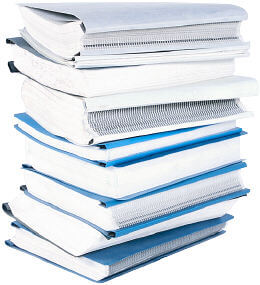12 Terms Every Reading Teacher Should Know

Reading is not a skill that comes naturally to every student. Even highly skilled readers needed guidance and direction at some point as they learned to read. Simply showing a child a book does not teach him to read. Research has found that every student is given the best chance at reading success when taught with explicit and systematic phonics instruction. For many children, the skills required to read must be broken down into smaller steps and practiced one at a time. For this reason, it is essential that reading teachers be thoroughly prepared and knowledgeable in their field. The following list includes terms commonly used when in regards to explicit and systematic phonics instruction:
- Accuracy is the ability to recognize words when they are read.
- Decoding means that the reader is able to translate a word from print to spoken. It demonstrates that the reader understands the sounds that match the symbols (letters). It is also what happens when a reader deciphers a word by “sounding it out.”
- Dyslexia is a language-based disability that affects both oral and written language. The most common manifestation of dyslexia is turning letters backward when one writes (“d” for “b,” for example), or mistaking one letter for another when reading.
- Fluency is the ability to read accurately, swiftly, and with correct expression and comprehension. Fluent readers do not have to concentrate on decoding words, so they can pay attention to the meaning of what they read.
- Literacy is reading, writing, and everything else involved in producing and understanding texts.
- A language learning disability is a disorder that may affect the comprehension and use of spoken or written language as well as nonverbal language, such as eye contact and tone of speech, in both adults and children.
- A learning disability is a disorder that affects one’s ability to either interpret what is seen and/or heard or to link information from different parts of the brain.
- Naming speed is the rate at which one can recite memorized stimuli, including letters and numbers.
- A child with oral language difficulties may exhibit poor vocabulary, low listening comprehension skills, or below-average grammatical abilities for his age.
- Orton-Gillingham is a multisensory approach to remediating dyslexia created by Dr. Samuel Orton, a neuropsychiatrist and pathologist, and Anna Gillingham, an educator and psychologist.
- Phonemic awareness is the ability to see, understand, and interact with the individual sounds in words. For example, a beginning reader demonstrates phonemic awareness by combining or blending the separate sounds of a word to say the word (/c/ /a/ /t/ - cat).
- Phonics instruction is a form of reading instruction based on the alphabetic principle that there is a predictable relationship between sounds and symbols (letters), and that this information can be used to decode words.
Learn how these important aspects of reading instruction and covered in Reading Horizons elementary reading curriculum and reading intervention program.
3 Comments

Sara said
This is a great article that every reading teacher should read. It's a nice summary of important terms that I think sometimes get skipped or ignored along the way.

angela said
Thanks for sharing your thought! We would love to hear about additional terms/concepts reading teachers have found to be necessary in reaching struggling readers.

Karen said
Great article for teachers, and those who show an interest in education. These 12 concepts are fundamental to helping struggling students. More please!!